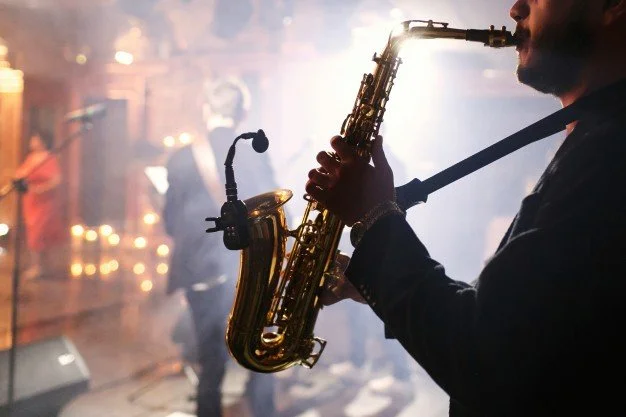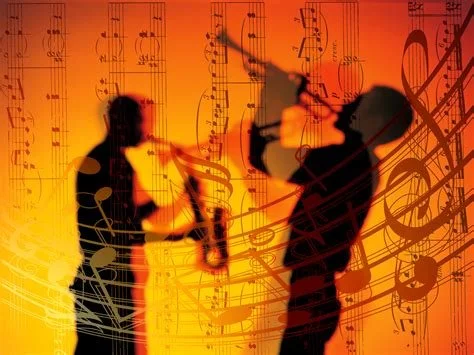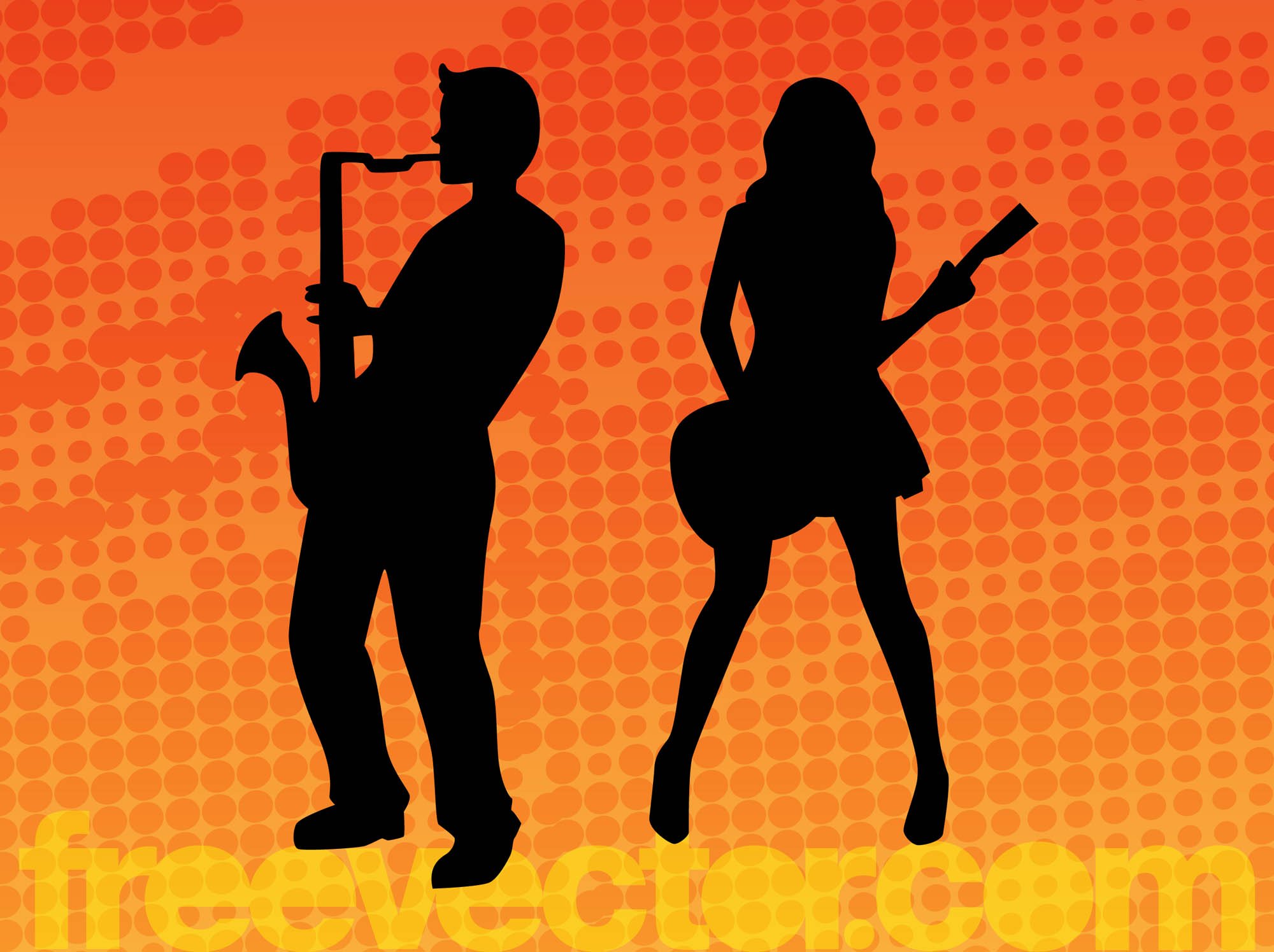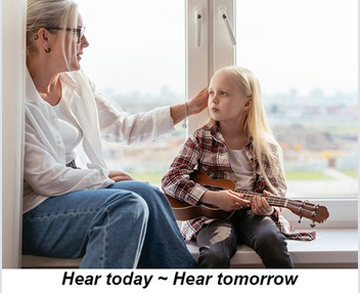The Musician & The Noise Braker
Protect your hearing with
Hocks Noise Brakers®
filtered earplugs
Concerts are loud. The average rock concert is 115 decibels.
A person can safely be exposed to that intensity for only 15 minutes a day. As concerts are longer than 15 minutes, most concert goers are damaging their hearing, listening with unprotected ears.
This is dangerous for concert goers, and even more damaging for the musicians performing those concerts. Many musicians, from classical to rock groups, suffer from hearing loss. Thirty to fifty percent of musicians suffer from tinnitus, most likely from noise-induced hearing loss, according to studies.
Tinnitus is the perception of sound in one or both ears when there is no external sound, often referred to as ringing in the ears. The 'ringing' can be a soft background noise, or an overpowering noise that drowns out all other sounds. It can be occasional or constant, and usually accompanies hearing loss.
Tinnitus can be caused when loud noises damage the sensory hairs within the cochlea. The damage to the hairs can cause them to relay false data. Hearing loss occurs when the hairs relay little or no data. The false data is translated by the brain as ringing, buzzing, whistling, hissing, clicking, chirping, or pulsing sounds.
People at the highest risk for noise induced hearing loss work in noisy professions, including musicians, farmers, dentists, airport workers, and military service members.
Some performing musicians use ear monitors, regulating the level of sound absorbed when performing. Some forms of hearing protection are available that provide a speaker, helping the performer hear his / her own music. In-ear monitors, often custom fitted, are worn when listening to a custom mix of instrument and vocal music, and for recording studio mixing.
Many musicians, those who do not need in-ear playback, benefit from wearing Hocks Noise Brakers®, hearing protection with an acousic filter.
Ordinary earplugs cut off high-frequency sounds, making voices muffled and the timbre of music dull (Sataloff, R.T. Hearing loss in Musicians, American Journal of Otology 1991). This is where the Noise Braker, utilizing the Hocks Noise Filter®, shows its greatest strength. Sound is not muffled, and it is reduced to approximately speech level.
Hearing protection is worth everything.
Noise Brakers can be custom made for your ears only, offering the best protection with the custom fit, while allowing conversational level sound to enter the ears.
Musicians and Hearing Protection
The Noise Braker, hearing protection with a Hocks Noise Filter®, reduces the volume entering your ear, while letting you hear, with no electronic parts to break, or power cells to replace.
The actual amount of noise reduction depends on fit (in the case of Noise Braker® Standards), volume (the louder the volume, the more noise is reduced), and pitch (highness or lowness of sound). Lower sounds are not reduced as much as middle to high sounds.
Music can be heard, and concerts enjoyed, while protecting your ears from dangerous sound levels.
Many musicians use this protection, from symphony orchestra musicians to jazz and rock performers.
Letting You Hear
Protecting Your Ears
Customer Testimonial
“When I'm on stage, they not only protect my hearing, they also help me hear the whole band. Because of the way they work, I can hear every instrument on stage, not just the loudest or ones closest to me.“
K.D. - "I've worn Hocks Noise Brakers for 40 years. My mother insisted I get fitted for my first pair when I was just 16 year old. She was concerned that my daily drum set practicing would harm my hearing.
I've worn them throughout my tour with the United States Marine Corps Band in hundreds of music performances. I also wore them on the rifle range and when loading gear on planes when the band traveled. I've worn them when I was working in construction, logging, and when teaching music and working with marching bands. I wear them whenever I'm operating hand tools, yard tools or vacuuming. I always wear them when practicing my drums and, as a working professional drummer, I've worn them to thousands of live performances over the years. I also wear them when I'm in the recording studio, under my headphones.
I've worked around crashing cymbals, blasting trumpets, amplified guitars and in high-volume surroundings for most of the last 4 decades and I still have my hearing thanks to Hocks Noise Brakers® and a little encouragement from my mother.
Just ordered two new pairs of them. - Thanks, Hocks!"
According to the World Health Organization’s Report on Hearing…
Source: Center for Disease Control & Prevention
Noise is now being acknowledged as an important public health issue and a top environmental risk faced by the world today.
Over 50% of people aged 12–35 years listen to music via personal audio devices at volumes that pose a risk to their hearing. A rule of thumb for staying safe is to keep the volume below 60%.
If you frequently use personal audio devices around loud sounds, consider using noise cancelling earphones or headphones instead of turning the volume up.
Listening through personal audio devices should not exceed 80 dB (adults) or 75 dB for sensitive users (e.g., children).
Listeners who regularly use portable audio devices can expose themselves to the same level of sound in 15 minutes of music at 100 dB that an industrial worker would receive in an 8-hour day at 85 dB.




